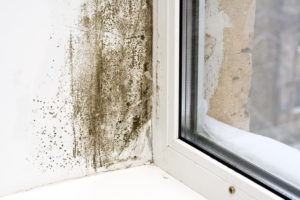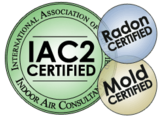 Its Spring in Utah – we are starting to see some green grass, fresh blooms and the ground is finally beginning to thaw. As happy as we are to see some signs of spring, melting snow can cause basement flooding. While the warming temps are the likely culprit, most flooding is caused by poor gutters, foundation cracks and improper runoff.
Its Spring in Utah – we are starting to see some green grass, fresh blooms and the ground is finally beginning to thaw. As happy as we are to see some signs of spring, melting snow can cause basement flooding. While the warming temps are the likely culprit, most flooding is caused by poor gutters, foundation cracks and improper runoff.
How does this happen?
As snow melts, it turns into water. On average, ten inches of snow will melt into one inch of water. The actual amount depends on how heavy the snow is. While Utah’s snow is said to be The Greatest Snow on Earth®, it is really light and dry, but still does contain water.
A quick thaw can introduce a significant amount of water to the soil around your home. If it can’t flow away from your foundation, it can pool there and may eventually enter your home. With enough water, it can cause flooding. Spring rains can make the situation worse, speeding up the melting snow while adding additional water.
Problems caused by Spring Snow Melt

Flooding & Water Damage
A rapid thaw can result in snow flooding your basement or crawl space. This typically happens is there is a sudden change in temperature. Snowmelt flooding can damage flooring and walls, and left untreated, this can eventually turn to mold.
Mold
Any time there is a persistent source of water, there is a potential for mold. Although mold generally prefers warmer temperatures, it will thrive if the conditions are right. It is most common during slow, gradual thaws, but may develop after water damage or a flood as well. If you have water damage, you need to get the area dry within 24-48 hours to prevent mold growth. Mold can be harmful to your health and something you’ll want to address sooner versus later.
Molds are part of the natural environment. Outdoors, molds play a part in nature by breaking down dead organic matter, such as fallen leaves and dead trees. But indoors, mold growth should be avoided. Molds reproduce by means of tiny spores; the spores are invisible to the naked eye and float through outdoor and indoor air. Mold may begin growing indoors when mold spores land on surfaces that are wet. There are many types of mold, and none of them will grow without water or moisture.
Can Mold Cause Health Problems?
How do I get rid of mold? 
- If there has been a lot of water damage, and/or mold growth covers more than 10 square feet, consult with HomeTech Property Inspections.
- If you choose to hire a contractor (or other professional service provider) to do the cleanup, make sure the contractor has experience cleaning up mold. Check references and ask the contractor to follow the recommendations of the EPA, the guidelines of the American Conference of Governmental Industrial Hygenists (ACGIH), or other guidelines from professional or government organizations.
- Do not run the HVAC system if you know or suspect that it is contaminated with mold. This could spread mold throughout the building.
- If the water and/or mold damage was caused by sewage or other contaminated water, then call in a professional who has experience cleaning and fixing buildings damaged by contaminated water.
- If you have health concerns, consult a health professional before starting cleanup.
Article courtesy of https://www.nachi.org/mold.htm

